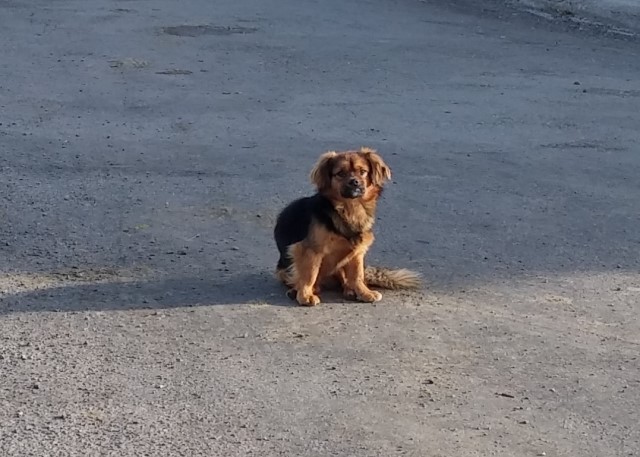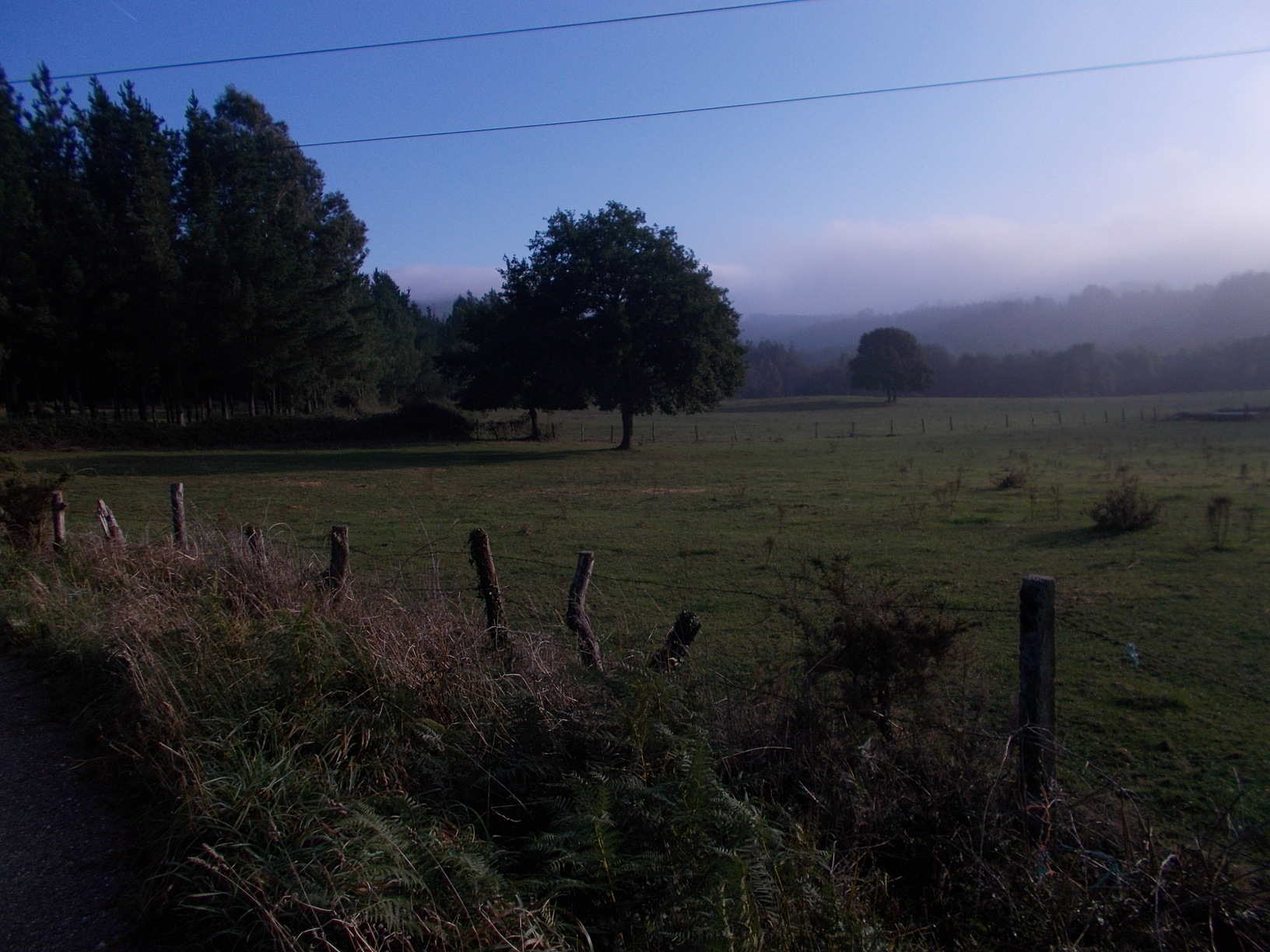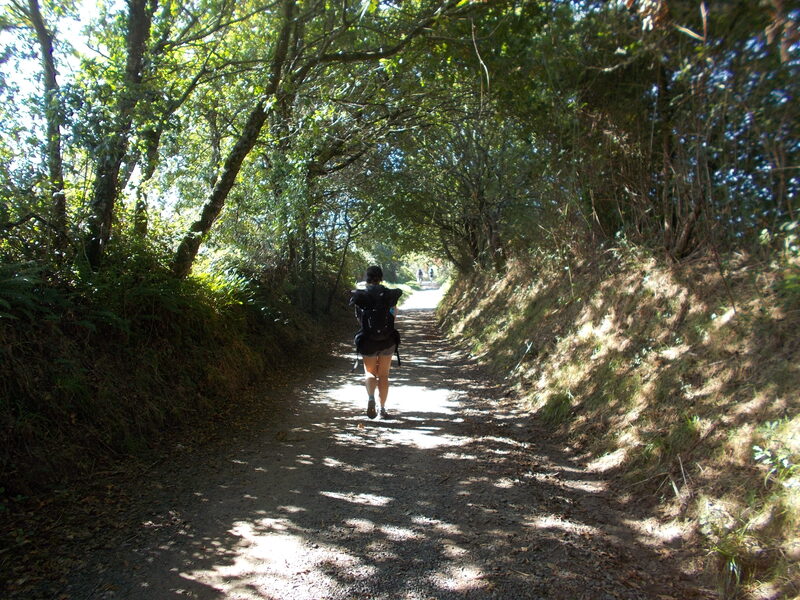Every true dog lover knows how hard it is to leave your beloved companion home for a month, while you embark on what can become the most memorable trip of your life–the Camino de Santiago. But can you walk the Camino with your dog? Will it be possible, and what obstacles will you face? Do many pilgrims walk with dogs, and should you pick a specific Camino route when walking with your dog? I will try to answer all the questions on the following lines, and hopefully by the end of reading this post you will know whether you can take a dog on a Camino, and whether you want to take it with you.
Let me answer the first question straight away: You can walk Camino with the dog. Dogs or other pets aren’t forbidden on the path, and, legally speaking, there is not a single reason that would restrain you from taking your beloved dog with you. Having said that, you should consider several things before you decide to take your dog to Spain with you. I’ve never walked the Camino with my dog, but I walked with people who had their dogs with them, and experienced the challenges they faced from a point of view of their Camino friend. Let’s move to them right away.
Table of Contents
Dogs aren’t allowed to stay in 95% of pilgrim hostels–at least not inside
Generally speaking, Spain does not belong to countries that are particularly friendly to travelers with dogs. Most accommodation places (regardless of the price range) either do not allow them at all, or they have to stay outside or in a special room designed for them. Forget about the treatment you get in some other European countries, where you simply take the dog to the room with you. That won’t be the case neither in expensive hotels nor in cheap places for pilgrims. It makes a lot of sense though, since in albergues (pilgrim hostels) you always share room with other people and some of them may be afraid of dogs, or simply they do not tolerate any animals in the room where they sleep.
Having said that, albergue owners won’t send you away once they see a dog next to you. They will typically allow you one of the following two options:
- You stay inside with other pilgrims and the dog stays outside, you paying the full price for the accommodation.
- Both you and the dog stay outside, but you can use shower and other facilities of the hostel, and pay slightly less than you’d do staying inside.
What option fits you better depends on how your dog reacts, and whether it is accustomed of sleeping alone and outside. What I try to say here is that if your dog starts barking as soon as you leave it outside, and won’t sleep for a second in such conditions, you should think twice whether it makes sense taking it with you…
* May also interest you: Can dogs stay in pilgrim hostels?

– One of many free-roaming dogs you can meet in Galicia, on any Camino. 95% of them aren’t any dangerous though, and this one was no exception to the rule. I took the picture back in 2015 on Camino del Norte.
Stray dogs on the camino and confrontation with other animals
Twenty-thirty years ago, stray dogs posed a major problem in almost all provinces of Spain, including the ones where major pilgrimage routes (including Camino Frances) pass. Good news is that Spanish government has addressed the issue to some extent, and on well-trodden paths like Camino Frances and Camino del Norte, the chances to meet a stray dog (that would bother your dog) are super slim. Not that you won’t meet any, it’s 800 kilometers after all, but meeting 2-3 stray (or simply free roaming) dogs over such a distance is something one has to count with in any country of the world.
In my experience though, some lesser-trodden Caminos (think Via de la Plata, Camino Mozarabe, Camino Olvidado) still have sections where stray dogs roam freely in the woods, and can attack you, especially if you have a dog with you (it happened to me on couple of occasions). Hence if you prefer avoiding such interactions, opt for one of the most popular Caminos.
Galicia (the province where Santiago de Compostela is located) is a category on its own. Every Spanish Camino ends in Galicia, so you cannot avoid walking in the province. And while there aren’t (m)any stray dogs in Galicia, local inhabitants often leave their gates open, and dogs guarding them can roam freely in the neighborhood. Following various Caminos in rural Galicia, it happened to me several times that a dog or group of dogs simply ran towards me from one of the houses, barking loudly. Needless to say, it isn’t exactly a type of experience one is looking for on a Camino :).
* May also interest you: Camino ultralight packing list – under 5 kilos, including the backpack
Heat of the Spanish summer and dogs
If you’ve never been to Spain in summer (or spring, or autumn), you may have a tendency to underestimate how hot it actually gets on many days. Camino Frances (the most popular Camino) passes through Meseta, great interior plateau of the Iberian Peninsula, but also through other stretches where you won’t find a refugee from sun. Via de la Plata (the silver road, connecting Seville and Santiago) passes through the province of Extremadura (meaning “extremely tough”), with temperatures in shade easily approaching 30 degrees Celsius in April already!
What I try to say here is that none of the Camino ways was designed with a thought in mind that people will actually walk it with their dog. Hence you will find many stretches with no shade, and of course there’s a lot of road walking on major Caminos, and so on, and so forth. I do not want to discourage you, but if your dog does not tolerate walking in the heat (or does not enjoy it at all), you have only two options left: walking in an off-season, from October to March, avoiding high temperatures of the summer, or carefully planning your way and starting very early in the morning (and finishing before noon) to avoid the heat.

– Via de la Plata, spring 2017. Such endless stretches of dirt roads amongst fields are typical for this way. Great for reflection and inner journey, but as you can imagine, it isn’t an ideal type of a landscape for a dog, with no shade in sight in kilometers ahead…
Best Camino for dogs, pluses and minuses of various routes in Spain
There’s not a single perfect Camino for dogs, but I will try to point out some pluses and minuses I see for every major Camino route, and some lesser known Caminos, for a pilgrim with a dog. Let’s move straight to it.
Camino Frances (from Saint Jean to Santiago) with a dog
- + Best infrastructure, so many accommodation options that you will always find a place that accepts dogs (at least outside).
- + Water fountains everywhere, which is a big plus unless you want to carry loads of water for both you and the dog.
- + Not that much asphalt and highway walking, at least when compared to Norte or Portuguese.
- + Virtually none stray dogs or wild animals.
- – Very hot from June to September, in the heat of summer it is almost unbearable for humans, let alone for dogs. Long stretches without shade.
- – Always someone around, which is rather a minus than a plus for a dog.
- – Very hard to find good places for camping/sleeping outside with a dog (should you want to do so), due to the commercialization of the route.
Camino del Norte (staring in Irun) with a dog
- + It is cloudy and rains more often, plus the close proximity of the ocean guarantees that even in the summer the temperatures do not attack crazy numbers like they do in Spanish interior.
- + It is super rare to experience temperatures above 30 degrees Celsius in shade, even in the high season of August and September.
- + Ability to take your dog for a swim (or to simply cool down) in the Atlantic on almost every day.
- – Lot of road walking, including a few stretches on really busy roads full of cars (up to this point I haven’t understood why they haven’t mapped it otherwise). On Camino del Norte, you will walk over 50% of time on asphalt, and that’s something to consider when you go with a dog.
- – In some coastal towns (where pilgrims sleep in the center of the city) you may find it hard to find an accommodation which accepts dogs, hence more planning is required. Such places often do not have any courtyard, and logically they do not have an outside space for dogs like the albergues in small villages do.
* May also interest you: Best time to walk Camino del Norte
Camino Portuguese (from Porto of Lisbon) with a dog
- + The way from Porto isn’t too long, so even if something goes wrong or the experience isn’t exactly as you hoped for with the dog, in ten days you are in Santiago and can head for another adventure with your beloved companion (or simply fly home :)).
- + The mainland route is relatively covered from the sun, plus the proximity of the ocean makes the weather cooler, even in summer.
- – A lot of road walking, especially from Lisbon to Porto–I do not recommend this part with a dog at all. Actually I do not recommend it even without a dog.
- – Lot of pilgrims around in the main season, often more than the current capacity of pilgrim hostels can accommodate, which poses a problem, especially if you have a dog with you.
Via de la Plata (Seville – Santiago) with a dog
- + Much less road walking compared to other Caminos.
- + On many months of the year the albergues are almost vacant, and in many cases there isn’t even any staff inside, which allows you to take the dog inside with you.
- + Good for camping outside.
- – Long stretches with no shade and no water source, you will need to carry a lot of water for your dog.
- – Extremely hot from June to September, do not take your dog there with you in summer, unless you want to return home without it.
- – Presence of stray dogs on certain sections of the route.
Camino Primitivo (from Oviedo to Santiago) with a dog
- + Generally a much better terrain for a dog, less asphalt but also some nice hills and a kind of a terrain dogs enjoy.
- + Weather is often overcast and temperatures aren’t typically as high as they are on Camino Frances or Via de la Plata.
- + Several nice donativo albergeus, with owners who think on pilgrims with dogs and have infrastructure in place ready for them.
- – Gets very crowded in summer, you may find it hard to get a bed for you let alone for a dog.
- – Storms are common in the summer season, hence if your dog is afraid of lighting and thunders, it may not be the best choice, though you can be lucky and avoid storms, since this isn’t a particularly long camino.
Final thoughts
You can walk Camino de Santiago with a dog, but as you can see now, walking with a dog, or with other pet, has certain drawbacks. The concept of the Camino isn’t designed for pilgrims with dogs, and since less than 1% of all pilgrims walk with a dog, this isn’t going to change in the near future.
If you decide to walk with a dog, think carefully about the season, route you want to follow, and take a small tent with you, because you will sleep outside on some nights (there simply won’t be another option). The best suggestion I can give you though is the following one: If you simply want to do a long walk with a dog, and aren’t pursuing a Catholic pilgrimage, choose something else. There are many wonderful mountainous long distance hiking trails all around the world, much more fitting for dogs than Camino de Santiago :). Hope this helps, and regardless of how you decide, I wish you a wonderful walk!
Matej
May also interest you:




![Ultralight Packing List for Camino de Santiago [2025 Edition]](https://caminolovers.com/wp-content/uploads/2022/03/altra-shoes-640-x-480.jpg)


